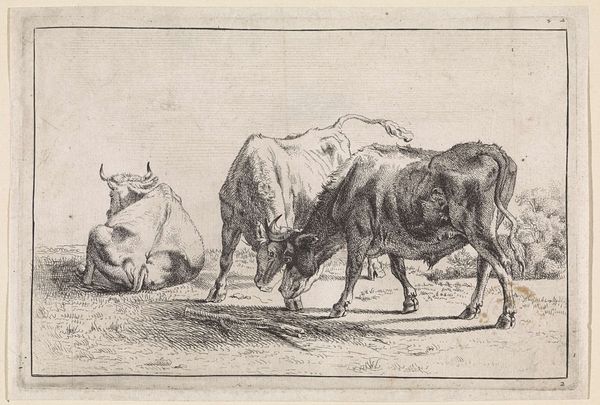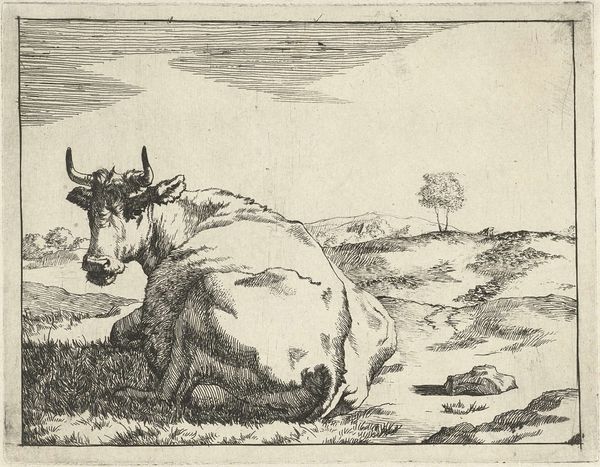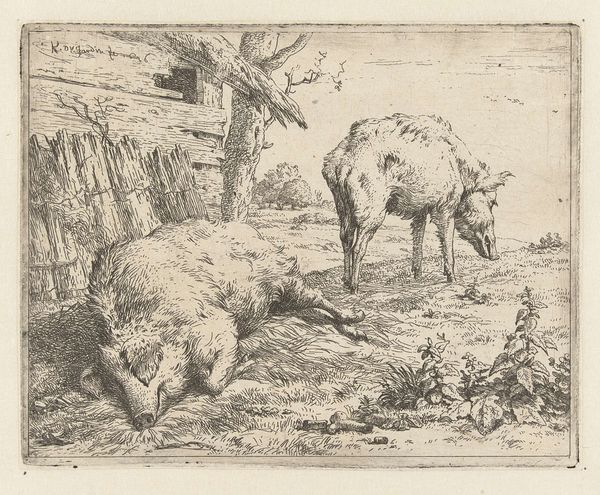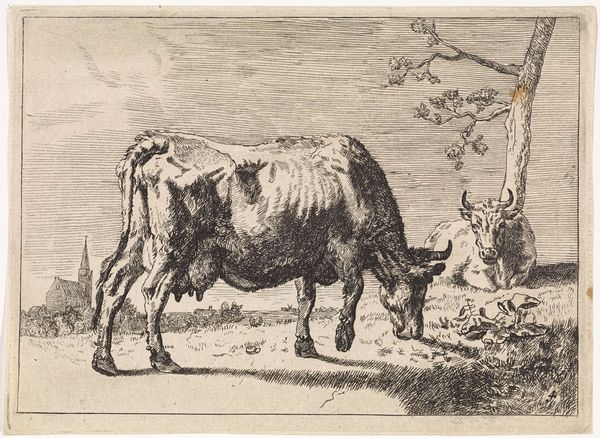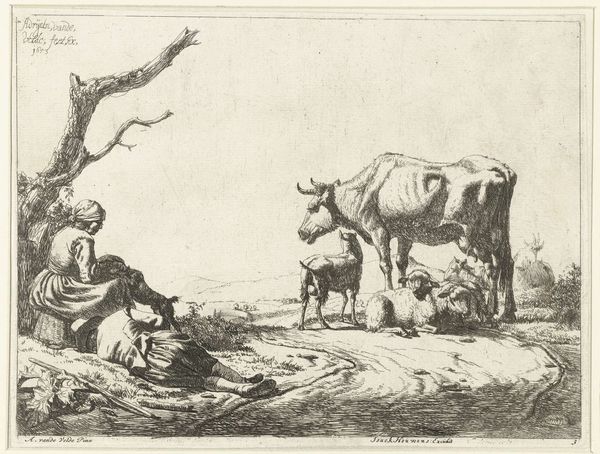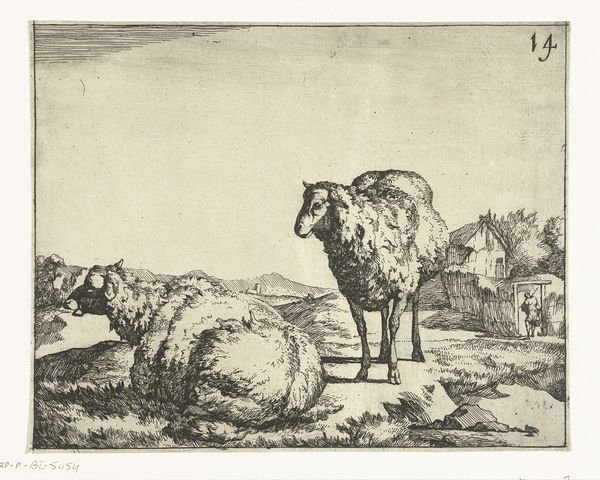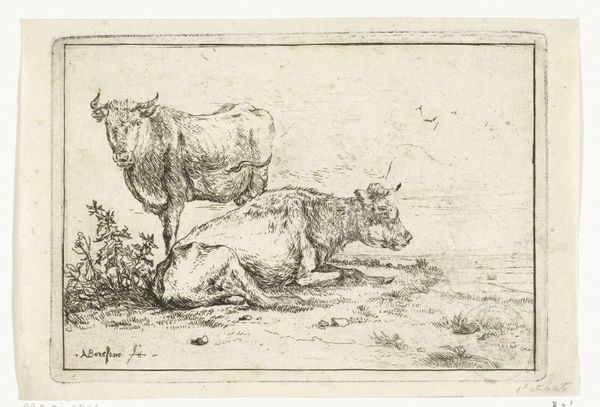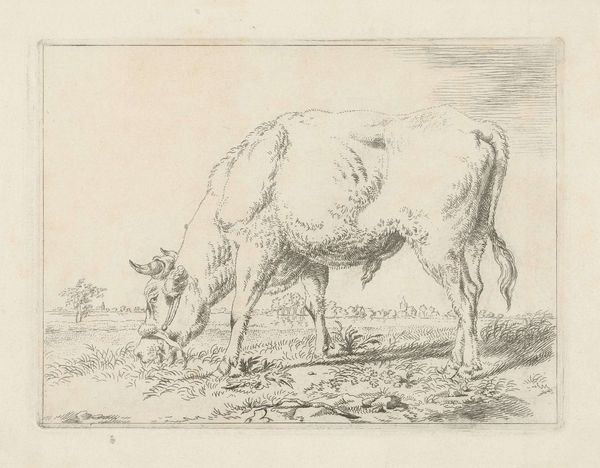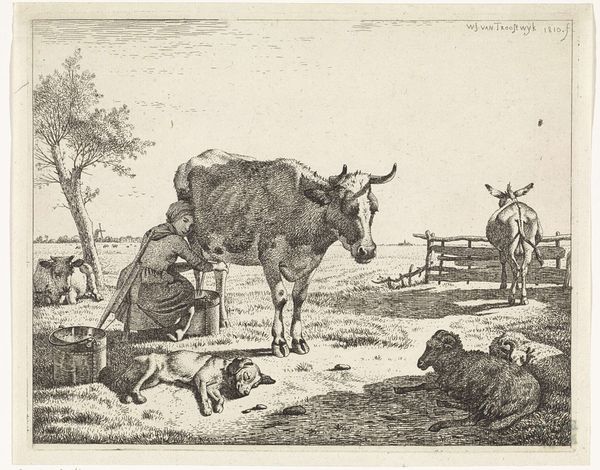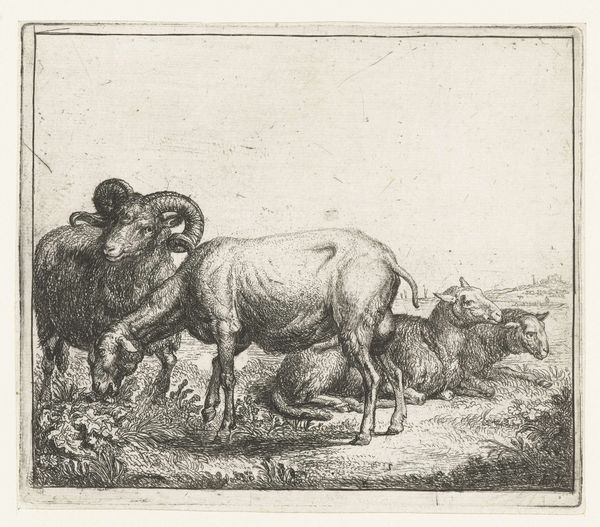
drawing, etching
#
drawing
#
animal
#
mechanical pen drawing
#
pen illustration
#
pen sketch
#
etching
#
landscape
#
personal sketchbook
#
ink drawing experimentation
#
pen-ink sketch
#
pen work
#
sketchbook drawing
#
genre-painting
#
storyboard and sketchbook work
#
sketchbook art
Dimensions: height 75 mm, width 100 mm
Copyright: Rijks Museum: Open Domain
Editor: Here we have Jan van Ossenbeeck’s "Twee Ezels," made sometime between 1647 and 1674. It appears to be an etching, and what immediately grabs me is the unusual perspective – almost confrontational, with the donkey's rear dominating the foreground. How do you read the composition of this piece? Curator: The dominance of the donkey's rear is indeed striking. Consider the linear qualities—the repeated etched lines which create shading and texture, giving form to the animal’s bulk. The composition utilizes a distinct contrast between foreground and background. Observe how the foreground details the texture of the animal's coat and the ground, whilst the background figures are rendered with lighter, more sparse strokes. What does that contrast evoke for you? Editor: It's almost as if the artist is making a statement about focus and perspective. By exaggerating the animal closest to us, everything behind is softened in detail. The use of the stark linear strokes, it really contrasts against the more open space in the background and leads the eye, wouldn’t you say? Curator: Precisely. It’s also crucial to analyze the geometric structure within the work. Notice how the rounded form of the donkey contrasts with the sharper angles of the landscape. These geometric variations add visual dynamism. Now, consider the implications of focusing on such commonplace creatures through such dedicated use of etching, which can capture textures in a precise but somewhat expressive way. What does the artist elevate through that dedication of medium? Editor: I suppose it could be argued that Ossenbeeck is finding artistic value in the mundane or the everyday. Curator: An astute observation. Furthermore, ponder the role of line itself. Does it merely define form, or does it also convey movement and perhaps even emotion through variation in density and direction? Editor: I'm starting to appreciate the subtleties within what seemed, initially, to be a simple sketch. Thank you. Curator: Indeed. Analyzing the interplay of formal elements enriches our comprehension of artistic intent.
Comments
No comments
Be the first to comment and join the conversation on the ultimate creative platform.
